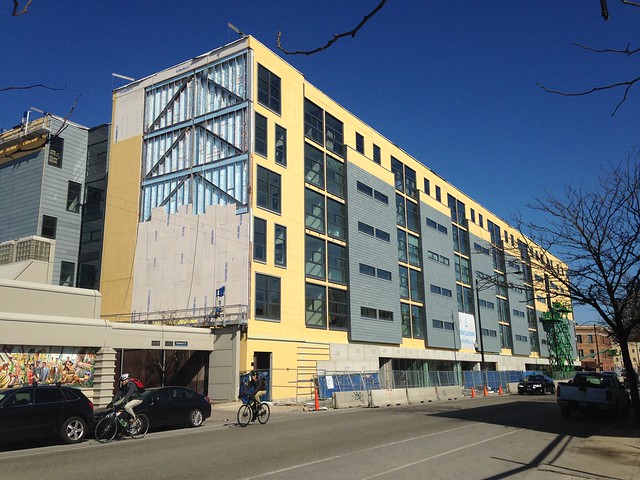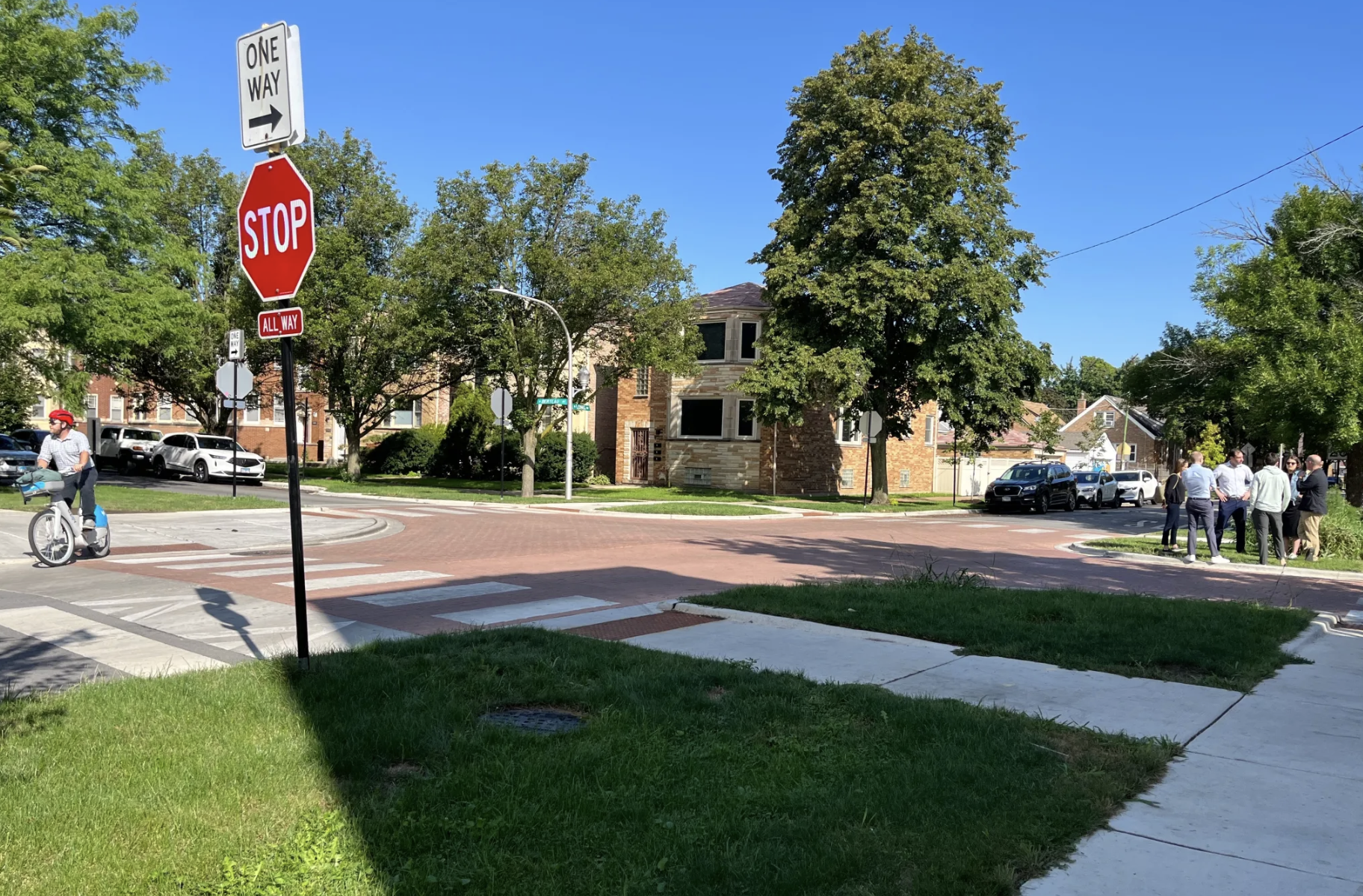[The Chicago Reader recently launched a new weekly transportation column written by Streetsblog Chicago editor John Greenfield. This partnership will allow Streetsblog to extend the reach of our livable streets advocacy. We’ll be syndicating a portion of the column on the day it comes out online; you can read the remainder on the Reader’s website or in print. The paper hits the streets on Thursdays.]
Transit-oriented development is a progressive approach to building new housing. Densely packed units are clustered close to rapid transit, with relatively few parking spaces, making it easy for lots of residents to get around without a car. That means less driving in the neighborhood. And, since garage parking costs tens of thousands of dollars per stall and takes up precious floor space, fewer spots for cars means developers can build more apartments in a given footprint and pass on the savings to tenants, potentially boosting affordability.
So why did about 20 left-leaning activists blockade the worksite for the Twin Towers TOD project at 2293 N. Milwaukee on Saturday, April 9? They formed a human chain across the street and locked to each other via PVC tubes and concrete-filled buckets, chanting "How high's the rent? Too damn high." Dozens more demonstrators cheered from the sidewalks, holding signs that read "Logan Square is not for sale."
The protest, led by Somos ("We Are") Logan Square and Lifted Voices, made the argument that the upscale ten- and 11-story rental towers, along with a high-end six-story transit-oriented apartment building down the street, will accelerate the already rapid pace of gentrification in the neighborhood. They say the transit-friendly aspects of the buildings, both located a few minutes walk from the Blue Line's California station, are little more than greenwashing.
"The [transit-oriented development] concept is being perverted and used as justification to allow developers to run rampant with huge luxury buildings," says Somos spokeswoman Justine Bayod Espoz. "These developments will ultimately push the families that most rely on public transportation further and further away from the transit hubs."
But First Ward alderman Proco Joe Moreno and others argue that, in addition to being a smart strategy for reducing car dependency, these developments will actually help longtime residents stay in the neighborhood. Ten percent of the new apartments will be affordable. And by increasing Logan Square's housing supply, they say, the buildings will actually take pressure off the local rental market.
In 2013, Moreno got the city's first transit-oriented development ordinance passed, which cut the usual one-to-one apartment-to-parking-spot requirement in half for buildings within 600 feet of an el or Metra stop. Last September the City Council beefed up the legislation, doubling that distance and eliminating the parking minimums for TODs altogether.
Reducing the parking burden helped fuel Chicago's current rental building boom. About 30 new TOD projects are planned, under construction, or already built. But virtually all of them are high-end projects in affluent or gentrifying neighborhoods.
Many of these parking-lite buildings feature small studio or one-bedroom apartments aimed at young professionals—particularly tech workers, according to real estate professionals I've talked to—less interested in car ownership than living in a hot neighborhood with easy train access to downtown jobs.
That's developer Rob Buono's strategy with the Twin Towers, which will contain 216 units but only 56 parking spots. Market-rate apartments will rent for $1,400 for a studio to $2,500 for a two-bedroom.
At the 120-unit tower at 2211 N. Milwaukee—dubbed "L" by Property Markets Group to emphasize its proximity to the train—market-rate units will cost between $1,575 and $3,900. There will be 12 affordable apartments and 60 parking spaces.
As a matter of policy, Alderman Moreno insists that 10 percent of units be affordable before he'll grant a zoning change, rather than letting developers take the cheaper route of paying into the city's affordable housing fund. Therefore the Twin Towers will include 22 affordable units that will run about $800 a month—a bargain for an upscale high-rise a block or two from the train in a trendy part of town.
Buono credited the TOD law with his decision to build the Twin Towers. "Absent that ordinance, it's unlikely the building would have been constructed," he says. (Property Markets Group declined to comment.)







